Strong Start to the Fall Asian Art Auction Season - Featuring Bronzes, Porcelain and Monkeys
- Anthony Wu

- Sep 21, 2017
- 6 min read
I'm back from another whirlwind visit to New York City! This time it was for the Fall Asia Week festivities from September 8th until September 16th. I ended up staying for five days in the midtown area.
The September auctions at the big three international auction houses - Bonhams, Christie's and Sotheby's - are typically a little bit more low key than the March editions, but there was still so many places to visit with over 2000 Asian Art objects to preview.
After seeing and handling so many items, it always difficult to pick out the favourites, but I'll still give it a shot:
At Christie's NYC, many of their top Asian Art pieces happened to be bronzes season. One of their top sellers was this incredible Large and Important Gilt Bronze Figure of Buddha from their 'Indian, Himalayan and Southeast Asian Works of Art' auction. Typically I would be ecstatic just seeing a seated Buddha that is 30-35 cm high, but this one is an astonishing 50.5 cm in height!
This Buddha came from the collection of The Baroness Carmen Thyssen-Bornemisza, the keeper of her family's renowned collection of European paintings. Her home also contained exceptional Asian works of art like this present Buddhist sculpture.
Originally from Nepal and dated to the 13th/14th Century, this Buddha has his right hand in bhumisparoshas mudra, which is the gesture when he called the earth to witness his enlightenment. With a conservative estimate of USD 600/800,000, the Buddha sold for an incredible price of USD 3.852 million.
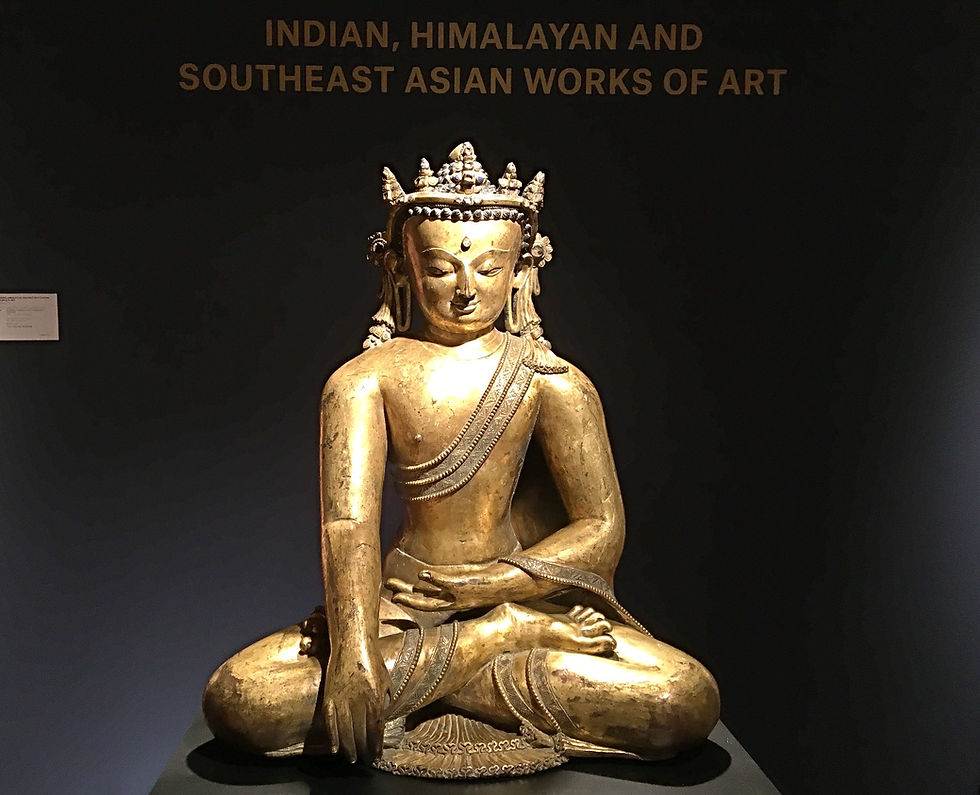
Another amazing Buddhist sculpture I saw at Christie's was this Korean Rare and Important Gilt-Bronze Standing Figure of Buddha. This figure is dated to the 8th Century of the Silla Period (668-935), and it was the first time I handled a Korean Buddhist figure of this magnitude in my 13 years in the field.
Silla Period Buddha's are extremely rare and (based on my approximation) only come up for auction roughly every two years. This particular example also had exceptional provenance that can be traced back to 1917. Don't let the small size of 17.8 cm in height fool you - the figure is absolutely stunning in its simplicity, grace and appearance.
This Buddha was included in the mostly Chinese sale titled 'Treasures of the Noble Path: Early Buddhist Art from Japanese Collections'. Again with a conservative estimate of USD 80/120,000, it ended up being the top seller for this particular auction, fetching a realized price of USD 732,500.
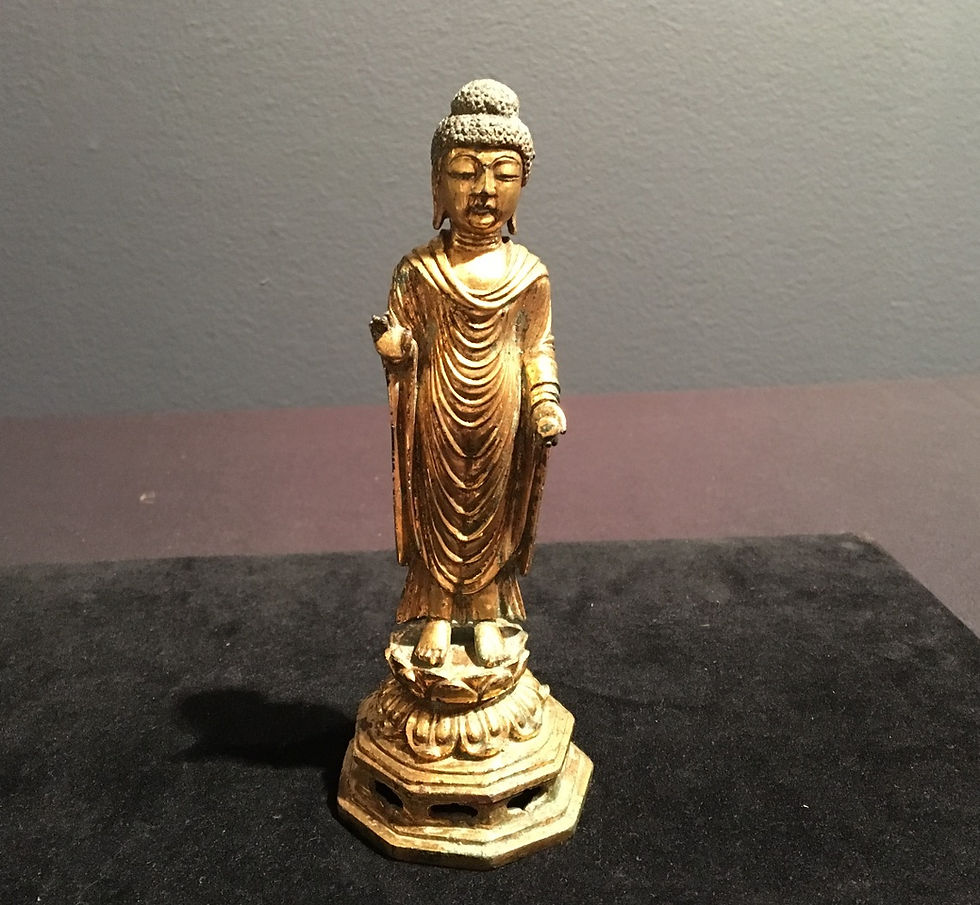
Finally one of the most popular Chinese bronzes at Christie's was called the Ya Fi Fangding, A Highly Important and Rare Bronze Rectangular Food Vessel, Fangding. This vessel originated from the 13th-11th Century BC of the Shang Dynasty and was used as a ritualistic food container. It was extensively published over the past 170 years, and its lineage of collectors can be traced back to Han Kejun (1766-1840) of the Qing Dynasty.
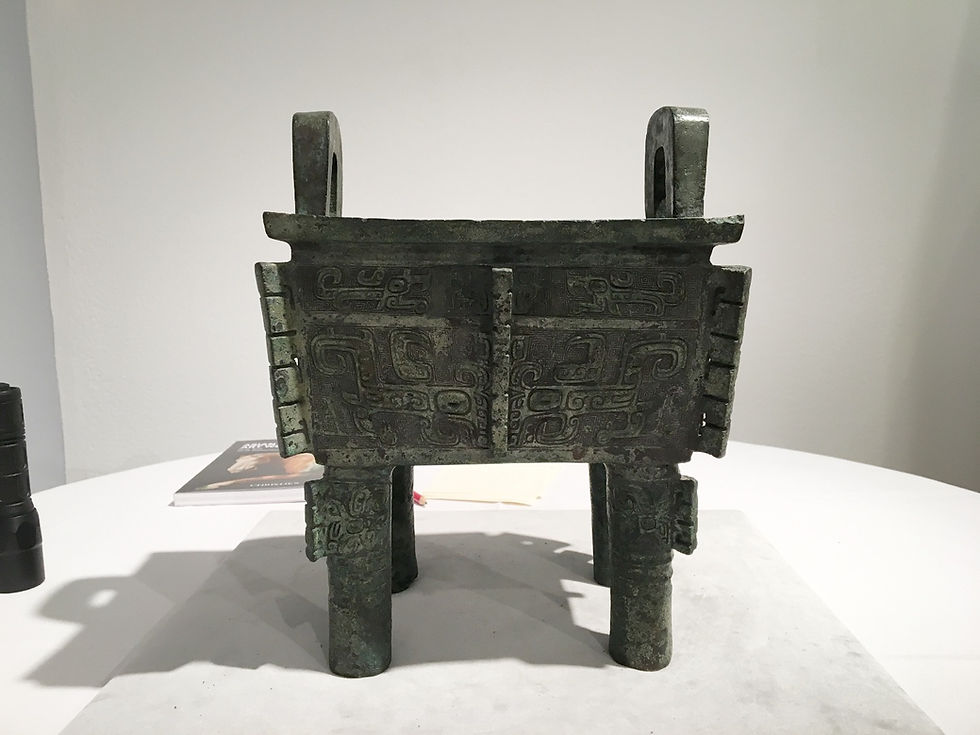
Standing on four sturdy columns legs, the rectangular body contains fierce taotie monster mask faces. When I lifted this bronze, it must have been at least 20-25 lbs in weight! The Christie's specialist also pointed out that the handles were covered in dragons which was rare for these types of vessels.
The interior had one of the most unusual inscriptions for Shang bronzes and is historically linked to belonging to the Yang Yi clan. It has an anthropomorphic look of a cruficorm perched on the ancient Chinese character yi.
Depsite a more aggressive estimate of USD 2/3 million, this bronze vessel still realised USD 3.372 million. It was one of the more impressive Chinese ancient bronzes that I handled over the years, and definitely worth the trip to NYC.

Sotheby's on 72nd Street and York Avenue also had a vast collection of Chinese artwork up for sale including paintings, bronzes, classical furniture and porcelain. I was especially impressed with their porcelain selection and I must have handled at least fifty pieces.
My favourite porcelain item I examined at their preview was this Fine Famille-Rose 'Boys at Play' Bottle Vase, Jiaqing Seal Mark and Period (1796-1820). There are so many interesting details to this piece.
The body shows a well-painted scene of young boys playing in a garden pavilion. In Chinese symbolism, artwork depicting boys hopes to grant the owner a long lineage of male heirs.
The vase's neck and base is enamelled in a rare lime-green ground adding to its rarity. The neck itself is decorated with large detailed lotuses flanked by scrolling vines and peaches. The top of the neck contains a cluster of fruits known as the the 'three abundances' (peach, finger citron, and pomegranates'. Each fruit represents an auspicious Chinese meaning:
Peach = Longevity
Finger Citron = Spiritual Enlightenment
Pomegranate = Fecundity

Here is a detail of the vase's six-character reign mark 大清嘉庆年制 (daqing jiaqing nianzhi) which translates to made in the year of the Jiaqing reign of the Qing Dynasty.
This vase was also sold at Christie's on May 4 1978, giving it a solid provenance and more confidence with potential buyers. The estimate of USD 60/80,000 was considered low when the eventual realised price ended up being USD 612,500.

Another porcelain item I admired was this really sweet Rare Carved Pale Turquoise Enamelled 'Kuilong' Bowl, Yongzheng Mark and Period (1723-1735). Yongzheng period porcelain was renowned for their perfection of monochrome wares. Turquoise ground bowls are some of the rarest types, and the decoration of this piece emulates ancient bronze wares with its meandering patterns and large stylized dragons (which my thumb is actually blocking).

Here is a detail of the bowls's base along with the six-character reign mark 大清雍正年制 (daqing yongzheng nianzhi) which translates to made in the year of the Yongzheng reign of the Qing Dynasty.
This amazing bowl ended up selling for USD 275,000 against an estimate of USD 50/70,000.

My third auction house visit was Bonhams on Madison Avenue where they held a preview of Japanese Art, Fine Chinese Paintings and Snuff Bottles. They also previewed a collection of stunning Buddhist bronzes that they will be selling in Hong Kong later this month. Titled 'Images of Devotion', these are some of the best bronzes I have seen in the last little while. I'll try to do a write up about them in the coming weeks.
Anyways, I was able to spend much more time this round in the Japanese galleries since they didn't have as many Chinese pieces on display. And I really do love Japanese Art even though my focus is mostly on Chinese Art these days.
One of my favourite pieces at the preview was this Haniwa Model of a Horse, 6th/7th Century of the Kofun Period (593-710). These types of earthenware are some of the earliest examples of Japanese Art, and I enjoy them for their stylized cylindrical appearance. This horse is considered a large example for Haniwa ceramics and it sold for USD 7,500.

If you have been following my Instagram pages, you will know I love finding Asian artworks containing monkeys. (This is because I was born in the Chinese zodiac year of the monkey!)
At Bonham's, I found one of the most frivolous depictions of a monkey EVER in this woodblock print triptych by Yoshu Chikanobu (1838-1912). Titled World's Number One Circus, it depicts Japanese Western-style circus acts with acrobats and wild animals.
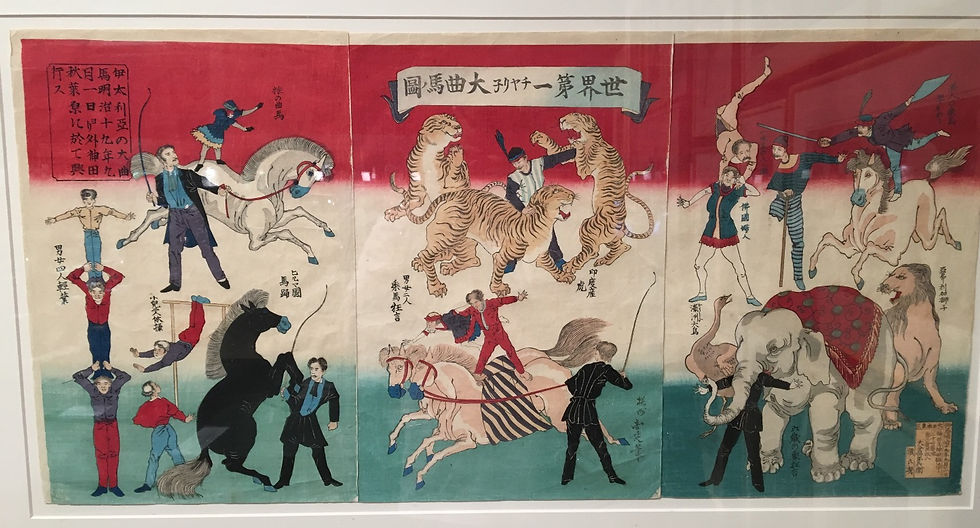
The one little detail that caught my eye is this cute little monkey in a blue dress. It is performing an acrobat act on a horse while his trainer carefully watches on.
Anyways, I probably should have purchased this print and now I have 'some' regrets. It was part of a set of two triptychs (I honestly don't remember what the other one even was... something with weird kites), and as a group lot, they sold for a whopping USD 1,375.

On the subject of monkeys is this Large and Highly Important Satsuma Presentation Vase by the renowned master Yabu Meizan (1853-1934). For satsuma standards, this vase is massive at 36.7 cm in height. It is dated to the early 20th Century and the four sides each contain different imagery from the four seasons.
One of the vase's side features a family of monkeys seated on a branch of cherry blossoms. This scene represents the spring.

Here's a detail of the monkey family panel. This scene was featured on the back cover of the Bonhams 'Fine Japanese Art' catalogue and is quite delightful in its detail and facetious nature.

The next photo showcases one of the vase's other sides - an autumn harvest scene with detailed farmers in a lush landscape. The other two scenes depict winter fishing against a mountainous backdrop and a summer procession into a field of chysanthemums.
The estimate for this vase initially seemed aggressive at USD 80/100,000, but this vase is one of the top masterpieces of satsuma ware to have appear in the market over the past decade. Its final sale price of USD 205,500 proved this point.

Detail of the vase's base with 'miniature' Yabu Meizan signature in gold paint.

That's it for the time being. I'll be traveling quite a lot in the upcoming months starting with a business trip to Vancouver in early October, and a trip to London and New York in November. If you have any comments or inquiries, please feel free to send me an email. Thanks for reading!



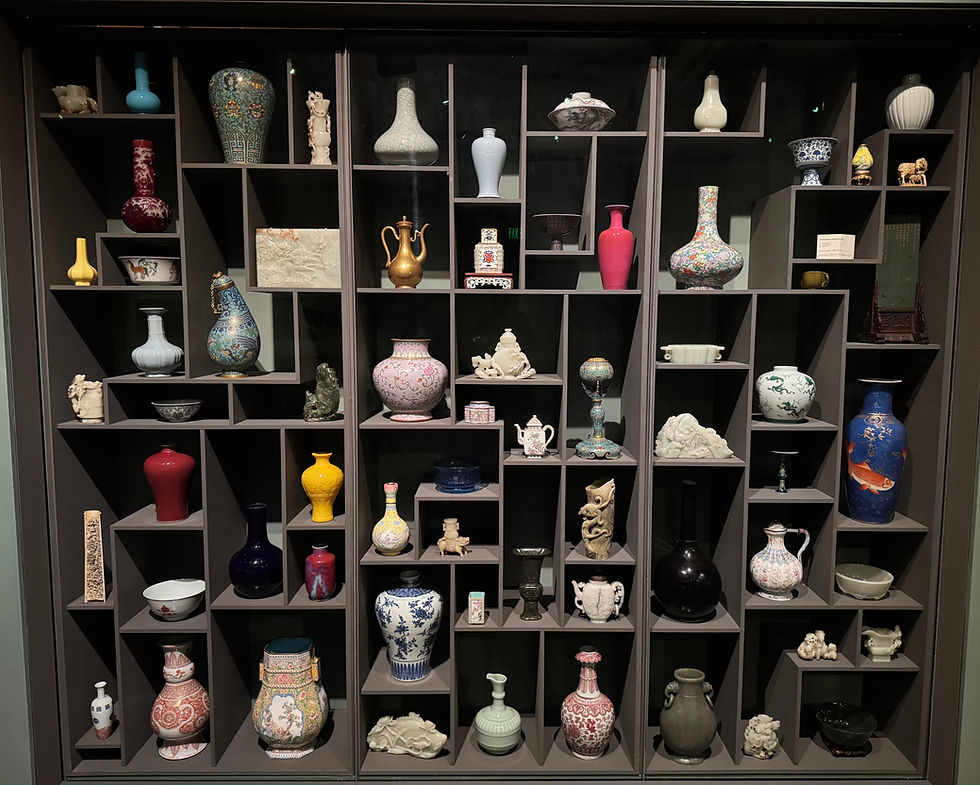
Comments